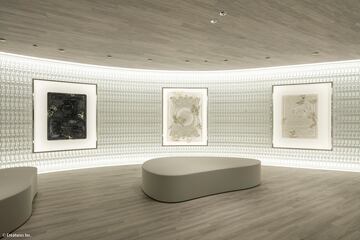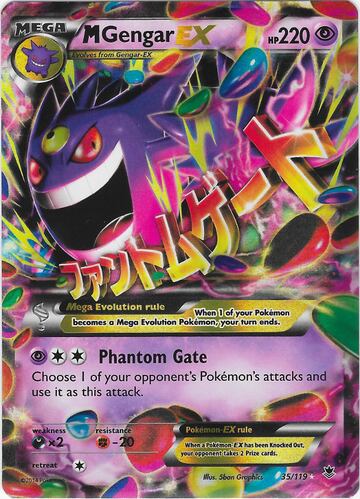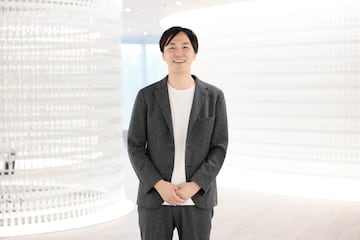Coverage
Visiting Creatures: What’s behind the Pokemon Trading Card Game?
Ahead of the Pokémon World Championships 2023 in Japan, we had the privilege of visiting the studio and learning about the process behind these cards.

Since its launch in 1996, Pokémon has enjoyed a popularity beyond the realm of video games. Series, manga and merchandise of all kinds were part of this launch to get to know this special world and its fantastic creatures. One of the pillars of this popularity, and one that is still in force, is the Trading Card Game, or Pokémon TCG. Though more discreet in the media, Creatures is the studio responsible for the development of this card game and is an important part of the group behind the entire Pokémon franchise.
A few days before the Pokémon World Championships 2023, we and other media from the region had the opportunity to visit the amazing offices of Creatures and learn some of the details behind the creation of these cards.
Creatures, a different kind of office
After a long drive from Yokohama to Tokyo, we arrived at a high-end corporate office building. As we stepped into the elevator, we encountered a pristine white space with a very unique design. We are in the lobby of a highly creative company that pays tribute to its work. On one side, we find the company’s logo in a very minimalist way, while on the rest of the walls, a metal design covers them with a pattern with the base of the cards from the card game. On the other side, and in addition to this design, we find giant and metal versions of two cards that are part of the history of the game, on one side we have the Blastoise design from the first set, while on the other side the famous Charizard card that takes us back to the first generation of the game. In between is the Pokémon logo on the back of the cards. It’s a surprising space.

The creation process
During the first presentation, the Creatures team had the opportunity to explain their process for creating everything related to the Pokémon Trading Card Game. The main idea that guides them is very clear: “To inspire those who engage with it to expand their imaginations. The process is unquestionable, and while there are a number of steps that seem to be separated by department, we were told that there is feedback throughout the company.
The first and most important step is planning. This is where the world of Pokémon video games is inspired by the world of cards. From here, 4 or 5 Pokémon are selected to form the basis of the decks, and the concept is narrowed down. Then we move on to the development stage, which is where all the data for the Pokémon is created, from its HP to its attacks and abilities, and where the first stages of testing begin.

Then we moved on to the illustration part. Creatures told us that in this part they try to find the best illustration that fits the product, for which the company has about 240 illustrators. After finding the balance between data and illustration, we move on to the next point, the design of the letter.
The final part is the part that every printing process has, where the data is checked to make sure that the content is correct and error-free. This is then sent to another proofing process to make sure everything matches. After that, they do the proof printing to see what the finished product would look like, if the colors of the illustrations really look as planned, or even if the card shines the way they want it to. After all these details have been checked, it’s time for the final part, which is printing.
What is behind the development of the Pokémon Trading Card Game?
After a short tour, talks with the development and illustration team, and even an activity to create our own Magnemite by artist Yuka Morii, we had the opportunity to sit down with Atsushi Nagashima, Director of Creatures. During this talk, he answered our questions about his work and how each card is created.

One of the surprising things about last year’s Pokémon World Championship was how young children were able to compete in the knockout games despite the language barrier. The question was, “How do you make the game so easy to play regardless of the language barrier or rules? Nagashima answered:
“I am actually amazed at how the kids and underage players can play and adapt. We focus on keeping the game simple and playable. That is the core of our game development. So, how do we make the game interesting on top of that? At Creatures, we have approximately 20 testers who are playtesting 7 hours each day. And so it takes a consistent continuation process of testing and testing. That’s where we fine-tune the data to ensure that it’s also exciting for other players.”
Card testing is paramount in Creatures, something that was emphasized in our next talk.
Quality control: Testing the cards
The last part of our visit brought us to the process by which cards are evaluated. As with any good game, balance is important, and for Creatures Pokémon TCG, there are 3 main goals that need to be met:
- Fun - the card should be fun enough for the player.
- Balance - check the card from its base to make sure it is not broken.
- Competitive - think about how the card can be used in tournaments up to the World Championship.
The card testing part happens during the second step of the creation process. It was explained to us that the cards they use have all the data they want to test, but their art is extremely simple, using the image of the Pokémon as a marker to visually help the testers. Within Creatures, there are a total of 18 testers to test these cards. As a joke, Kohei Kobayashi, director of the game, comments that the testers “live here” to test the cards all day long. These testers have a pool of all the cards that have been released over the years to create decks that can be adapted for different situations that they need to test.

These decks must be based on an objective to be tested. It was explained to us that the testers have to have a very high level of skill in creating the decks, as they have to think of very specific situations to meet certain criteria to be tested. As Kobayashi said, it is not about decks that meet the target but are also rare.
The visit to Creatures leaves us with an interesting way of developing a product that, although it seems far from the process we are used to in video games, is very familiar in its playful and competitive part. The different layers of development show a development methodology that seeks to deliver products that are almost handmade.